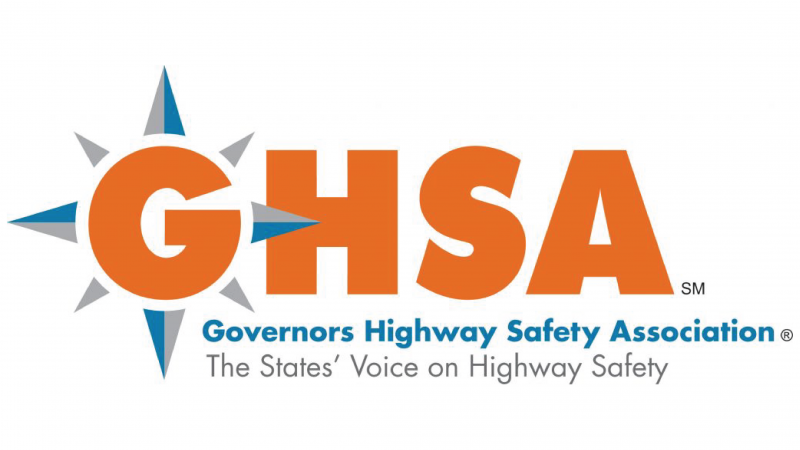New E-scooter Study Highlights Need for Infrastructure Improvement, Rider Training
August 27, 2020
CONTACT: Adrian Nicholas, 202-580-7934, anicholas@ghsa.org
Personal transportation device use will likely grow as wary commuters avoid public transit during the pandemic, requiring education, infrastructure investment, improved data collection and enforcement to protect road users.
WASHINGTON, D.C. – Micromobility – pedal-powered and electric bicycles (e-bikes), electric scooters (e-scooters) and other small transportation devices – has seen tremendous growth across the U.S. over the past decade, but challenges in oversight, infrastructure, enforcement and education have resulted in a patchwork approach to safety that does little to protect vulnerable road users.
“Understanding and Tackling Micromobility: Transportation’s New Disruptor,” is a new report from the Governors Highway Safety Association (GHSA) funded by State Farm® that examines the rise in personal transportation device (PTD) use, the challenges posed by this mode of travel and efforts by states and localities to address safety concerns. With shared micromobility systems in 47 states and Washington, DC, PTD use is expected to continue to grow over the next decade as people without the means, ability or desire to own a motor vehicle seek other forms of transportation. In addition, these devices give those dependent on mass transit a social distancing option during the pandemic.
“Micromobility devices, both shared and personally owned, are here to stay and we need to do more to ensure they’re operated safely,” said GHSA Executive Director Jonathan Adkins. “We need to raise awareness among motorists, pedestrians and law enforcement about the rules of the road on micromobility, and take action to upgrade laws, infrastructure and data systems for new mobility options.”
The number of trips on shared micromobility devices rose to 84 million in 2018, double the number from the previous year. As trips have increased, so too has the potential for crashes, with hospitals reporting triple digit spikes in e-scooter injuries and hospital admissions. While most scooter injuries are the result of falls or collisions with infrastructure, interactions between scooter riders and vehicles are more likely to be deadly. Of the 22 e-scooter fatalities that have occurred in the U.S. since 2018, 86 percent involved a motor vehicle. E-bike-related injuries are nearly three times more likely to be the result of a collision with a motor vehicle and severe enough to require hospitalization.
“State Farm has been a leader for mobility and transportation safety issues and looks to be a trusted source of information for public officials, in part by supporting works like this report,” said Margaret Nunne, Legal Counsel with the State Farm Law Department. “It is important to recognize the multiple modes of transportation sharing the roads today in order to promote safer roads for all. This publication offers an exploration of a multitude of potential concerns around micromobility for State Highway Safety Offices to consider in their efforts to address this evolving issue.”
The report examines six challenges posed by the rapid growth of these devices, as well as potential solutions:
- Oversight. Statutes and regulations vary from state to state and/or locality to locality, making it difficult for riders and other road users to know what is permitted and for law enforcement officials to address unsafe behaviors.
- Funding. The current U.S. surface transportation funding law – the FAST Act – does not authorize safety programs for micromobility, despite a decade of steady growth.
- Data. Micromobility-involved crashes and injuries are likely underreported due to the lack of a universal reporting standard.
- Infrastructure. Separating transportation modes is the most effective way to reduce crashes. If separate infrastructure does not exist, micromobility riders will go where they feel safe and innovate based on what is available.
- Enforcement. Most cities require providers to inform riders about safe operating rules, but enforcement of those rules is the responsibility of local law enforcement officials who may be hampered by the lack of laws and regulations and little or no officer training.
- Education. Education is essential for ensuring micromobility users operate these devices safely and respectfully and other road and sidewalk users respect the right of PTD users to operate on the public way.
The GHSA report also identifies localities that have taken positive steps to address some of these micromobility challenges. They include:
- Arlington County, VA instituted a ban on sidewalk riding where there is a protected bike lane posting signage to alert PTD riders. An educational campaign directed at all road users also encourages people to be a PAL – predictable, alert and lawful.
- Atlanta, GA compiles a monthly report that includes trip, parking violation and safety data that shows total trips, crashes and injuries reported to providers and fatalities. The city also created a guide to assist police officers with enforcement and crash reporting efforts.
- In Austin, TX, the Transportation and Police Departments collaborated to amend the City Code to include the operation of micromobility devices and bicycles on sidewalks and roadways.
- Boise, ID amended its e-scooter ordinance to slow riders down in congested areas and to assign ID numbers to each device enabling the public to report reckless riders.
- Santa Monica, CA requires providers to use geofencing to address parking, safety and oversaturation problems by setting up a deactivation zone around the beach area to slow down and eventually stop PTDs. Enforcement and education efforts by local police have resulted in dramatic drops in unsafe behaviors, such as not wearing a helmet, riding on the sidewalk and running red lights.
- Seattle, WA closed 20 miles of roads to motor vehicles to allow for pedestrians, bicyclists and PTD riders to socially distance during the pandemic and made the closure permanent in May. The city is also accelerating efforts to install biking infrastructure that includes greenways and protected bike lanes.
GHSA is hosting a webinar to review the report findings on Wednesday, September 2, at 3:00 p.m. EDT. This webinar is open to the public, but pre-registration is required.
